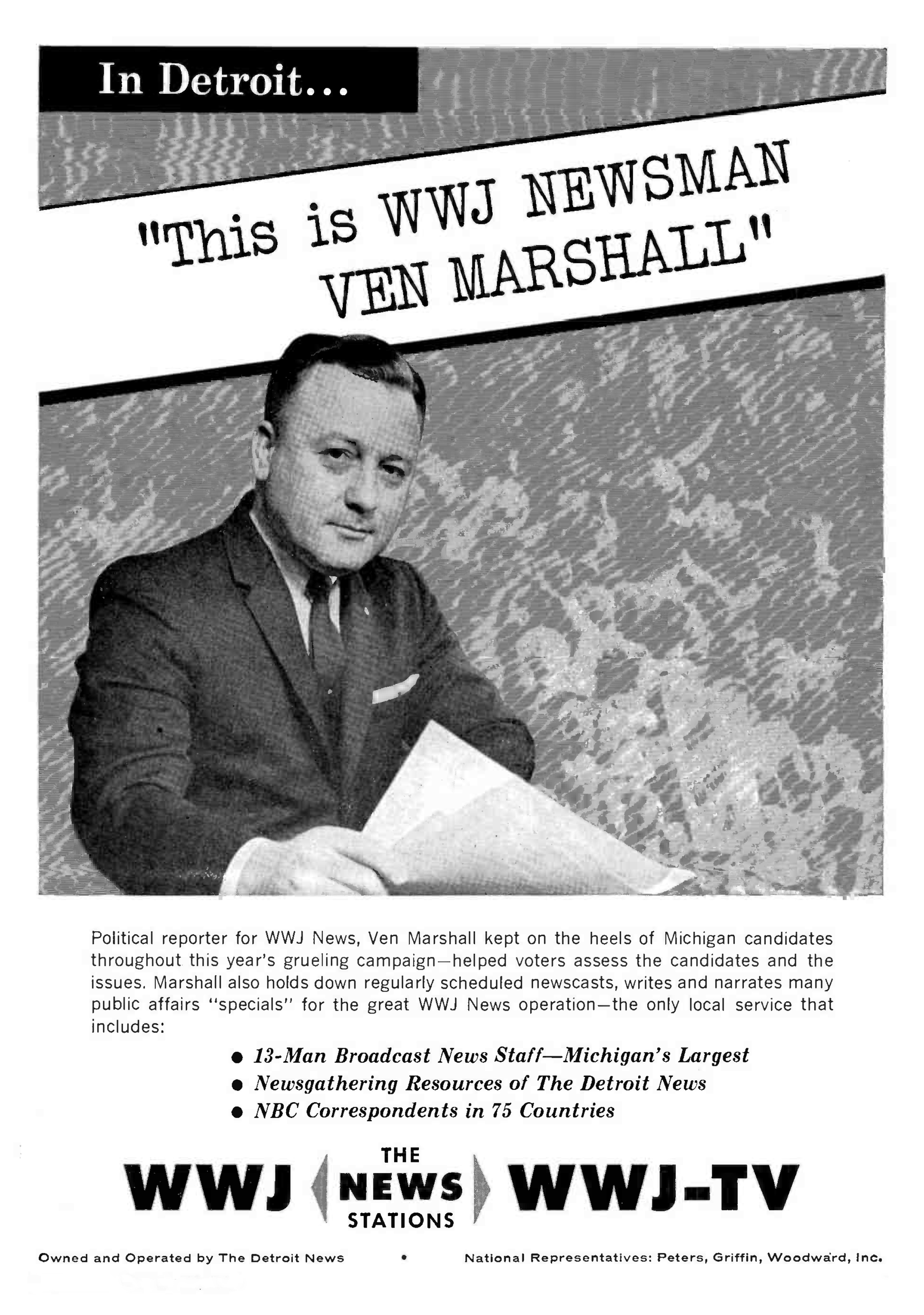
![]()
 From the MCRFB NEWS archive: 1964
From the MCRFB NEWS archive: 1964
BRITISH ACTS INTEREST WANE IN U.S.; CAUSING PROMOTERS FINANCIAL DRAIN
HOLLYWOOD — Concert promoters are taking a second look at the British bands as financial reports indicate that the romance between the long-haired lads and their adolescent admirers may be cooling — at least at the box office.
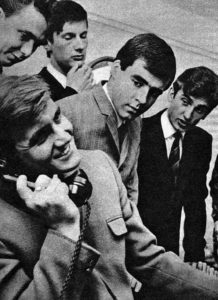
Ironically, America’s Top 40 radio stations are playing the British groups with dominating force, indicating that what happens in the concert arena has no relation to what makes a station’s playlist.
In a recent Las Vegas gig, the Dave Clark Five drew around 3,000 teens in the 8,000 seat Convention Center for an $8,000 gross, causing the Thunderbird Hotel and Vegas’ radio station KENO to suffer an unexpected loss. The same group had grossed $10,000 in Minneapolis but local promoter Ray Colihan lost $4,000 on the date. He paid the British band $25,000 for two dates, one in Des Moines. It was also reported that Colihan lost a larger sum promoting a concert with the Rolling Stones earlier this year.
The Rolling Stones cost one Chicago promoter by the name of Ed Pazdur $5,000 when they bombed in Cleveland earlier in November. The group had been booked in the 11,000 seat Public Auditorium with a $44,000 top gross potential.
The Rolling Stones show was in trouble when city fathers took exception to the news that young girls had withdrawn their savings from a bank and flown to England to visit the Beatles. Cleveland’s mayor Ralph Locher decreed that rock and roll contributed nothing to the city, casting the Rolling Stones show in a bad light. Pazdur has the Dave Clark Five booked for Thursday, December 17.
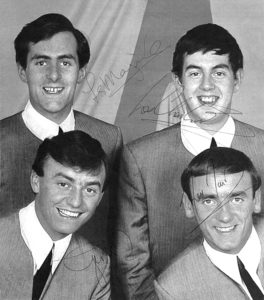
Other reports have reflected the same mood elsewhere. A British rock show in Ottawa, Ontario, fell on it’s face when the unit only drew 1,957 paid admissions in the 6,000 seat YMCA Auditorium. The bands headlining the show were Billy J. Kramer & The Dakotas, along with Gerry & The Pacemakers on the billing as well.
It is known that American publishers and now the promoters are concerned over the slipping box office appeal of certain British acts who are presently touring the concert circuit here.
As one publisher had stated, “This situation ought to be brought out into the open so that the disc jockeys would be fully appraised as to what’s happening. They’re playing the British records like they’re the only ones selling. But these same acts are bombing in person.” END
___
(Information and news source: Billboard; December 12, 1964)

![]()
 From the MCRFB NEWS archive: 1967
From the MCRFB NEWS archive: 1967
Drake Blasts Recording Reps for Tabbing Him Tight-Play Addict
NEW YORK — Bill Drake, program consultant who has been just hired to consult all RKO General radio stations, including CKLW in Windsor/Detroit, lashed out at record reps who would tag him with the image of a tight playlist artist.

Drake, who scored ratings successes at KFRC in San Francisco and KHJ in Los Angeles, was in New York last week trying to work his magic on an FM station — WOR-FM, a stereo operation that had already made a sizable dent in New York ratings with a rock ‘n’ roll format. One of the first moves Drake did make was hire Gary Mack, formerly at KHJ, at WOR as program director of the station, replacing Art Wander.
As for other changes at the station, Drake said he would would try to improve the presentation of the music and the content. “The station will continue to play a lot of diverse album music, aiming at the 18-35 age group. It’s going to be rock, using every type of LP cut. Oldies would have a lot of influence…. a lot of Motown product, for example.” He said that other radio stations under his banner have been playing album cuts, “but to take an album and put it in the control room and say the deejay can play from it, is the same fallacy a lot of stations make in saying Sinatra is a super star. You don’t play Sinatra for the sake that he’s Sinatra; he’s had some bad cuts too. You don’t play Dylan for the sake he’s Dylan, Sinatra for the sake he’s Sinatra, Motown for the sake they’re Motown,” Drake concluded.
“The object is to play the good Dylan, the good Sinatra,” he said. And a lot can determine this. People working at the various stations guided by Drake listen to every cut of every LP, every single. Drake credits his success to “hard work and the good people working with me in striving for total success.”
Swap Information
Information between the stations is exchanged in writing, there are conference telephone calls on the music itself, as station personnel all exchange playlists. “But the music playlists at various stations vary an awful lot. This actually gives us the opportunity, contrary to opinion, to expose and test nine times as many records as anyone else. If a radio station plays three new different records each week that the other stations are not playing, this would run to 27 new records each week.”
Basically, he felt his radio station policy isn’t just to play the top few records . . . but he does advocate not playing “losing” records. “The object is to play winners. It’s good for us, it’s good for the record companies. If you consistently have weak records on the air, it’s obviously going to limit the amount of exposure you can give a strong record.”
“I could never understand why record companies wouldn’t be irritated because their good product was being hurt by the amount of weak product sometimes played.”
Fresh Product
Drake does believe definitely in playing new records, saying his stations were spinning LP cuts by the Jefferson Airplane before the group hit paydirt with their recent single, “Somebody To Love.” “You’ve always got to have fresh new product on the air… good new records… whether by some new or known artists. Otherwise your station winds up with a staleness.”
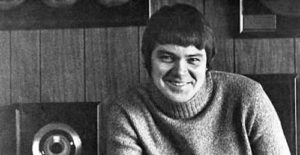
Playing records by and for hippies will not lead to a successful radio station; he felt. he believes the whole of the San Francisco movement is a myth. Request radio is also too narrowly aimed . . . “What’s wrong is that these stations get the teenage listeners. You want them too, but not exclusively. Younger kids are the only ones, however, who have the time and patience to dial for a particular song they want to hear on the radio. They aren’t going anywhere anyway. Because they have more time on their hands than older people have.“
The object of winning radio is to please everybody without going after just them. “You play ‘Happy Together’ by the Turtles, ‘You Keep Me Hangin’ On,’ by the Supremes . . . those are monster records everybody likes.”
Still, aside from the “monster” policy, Drake’s stations for the most part, do allow for some leeway. Tom Rounds, he said, picked up on “Ode To Billie Joe” early and began playing it under the assumption that it was going to become a monster hit on the chart. The record hit the chart a week ago like gangbusters and is still climbing.
Obviously, so is Bill Drake, currently rising fast with WOR-FM in New York and CKLW-AM in Detroit. END
___
(Information and news source: Billboard; August 12, 1967)

![]()

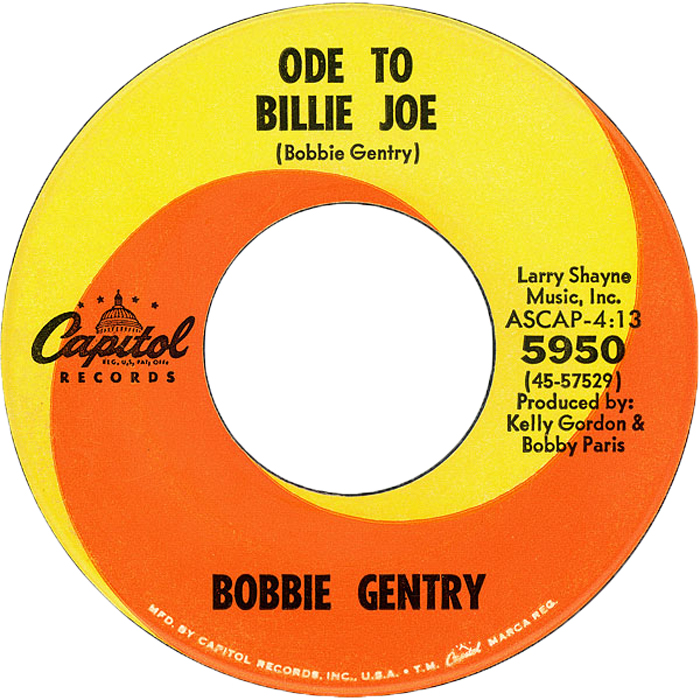
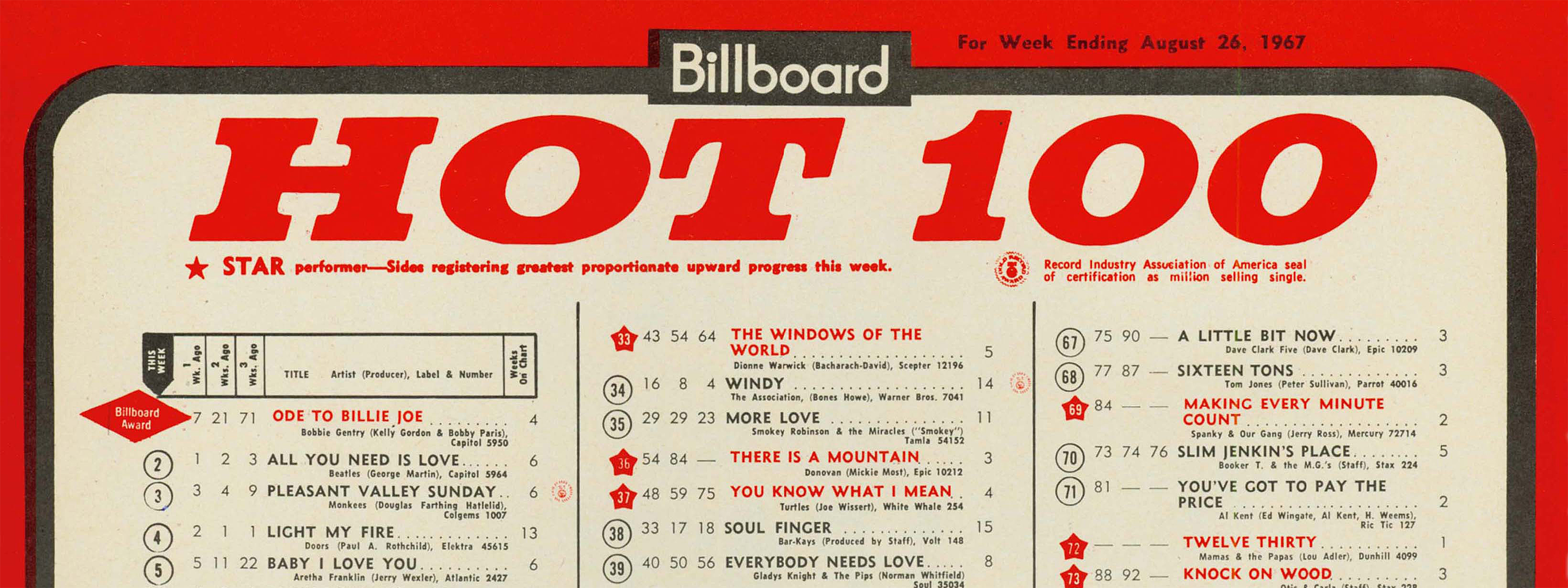
(Click on chart image 2x for detailed view)
___
FOURTEEN WEEKS on the singles chart, “Ode To Billie Joe” by Bobbie Gentry peaked this week at No. 01 (4 weeks) on the Billboard Hot 100, week August 20 through September 16, 1967. (source: Billboard)
___
MCRFB Link: For the previous No. 1 record in the U.S.A. 1967 GO HERE.

![]()
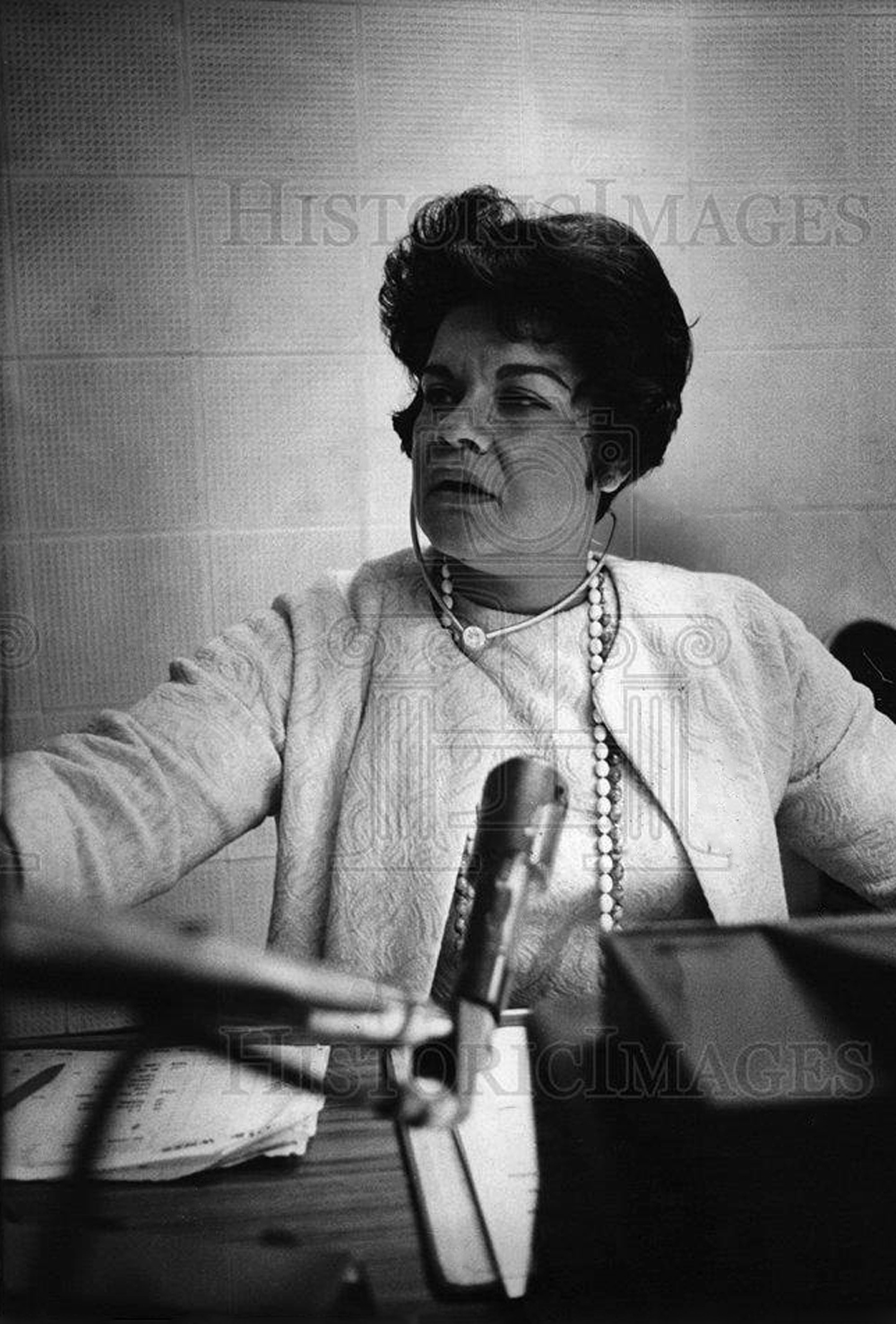
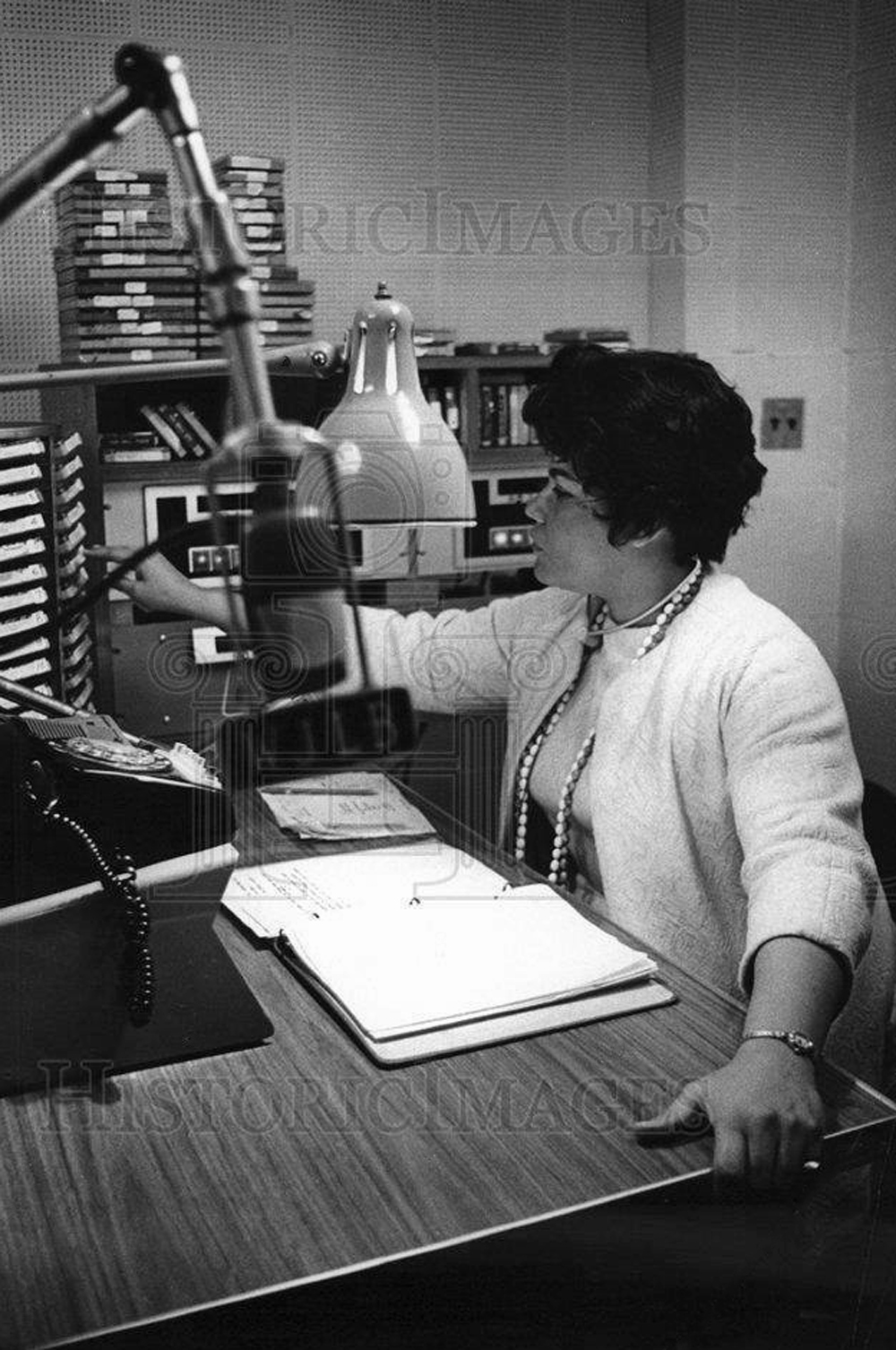
___
In the early 1950s, Martha Jean, would become one of but a few female broadcasters in the country working radio “on-the-air.” She landed her first DJ stint in broadcast radio when she was hired at Memphis’ WDIA in 1954.
In 1963, Bell Broadcasting in Detroit, WCHB, hired Martha Jean from Memphis’ WDIA. After three years on the radio there, she left WCHB for Detroit’s WJLB on October 24, 1966.
Fifty years ago, during the Detroit riot in July 1967, in her personal attempt to quell the widespread civil disturbance and “calm the citizenry” — Martha Jean convinced WJLB management to cancel all scheduled programming — thus allowing her to remain on the air for an unprecedented 48 consecutive hours.
The legendary soul radio personality Martha Jean, known as “The Queen,” remained a broadcasting staple for over four decades while in the Motor City. During her decades’ reign on the radio airways here she became a formidable voice for Detroit and its inner-city core. In 1982, she purchased her own radio station, thus, becoming its sole manager thereby having divested all prior control of operations for WQBH (formerly Detroit’s WMZK).
She remained there on the air until the day she passed away, January 29, 2000.


![]()
 From the MCRFB NEWS archive: 1965
From the MCRFB NEWS archive: 1965
West Coast Clamors For Dylan Tunes
HOLLYWOOD — West Coast recording companies are rushing to cut Bob Dylan songs, with his message-protest numbers all but killing surfing, hot-rod, and all other teen-age themed topics in recorded numbers this Summer.
California-based Music Publishers Holding Corporation head Jack Maas reveal that 48 different Dylan records have been cut within the past month, have either been released, or will be cut in the next several months. Many of the Dylan songs are ‘covers’ of hits already having found their way on the current national charts.

“Most of Dylan’s materials has been requested and recorded by West Coast companies,” Mass said. The reason he attributes to this West Coast activities is simply that young a&r men here have latched unto Dylan with more enthusiasm than their Eastern confreres.
Among these “young” producers, Maas names Steve Douglas and Dave Axelrod at Capitol; Gary Usher, Decca; Andy DiMartino, Liberty Records; Al Schmitt, RCA; Dick Glasser, Warner Bros.; Bud Dain, Crescendo; Terry Melcher, Columbia; Herb Alpert, A&M Records.
“In all my years as a publisher, I’ve never seen such activity for demand for one writer,” Mass emphasized. “I’ve got people constantly calling me for his material!”
There are currently seven Dylan tunes on the charts, and the movement is moving forward for the new folk-rock sound, which began with the Byrd’s single, “Mr. Tambourine Man,” and then the avalanche for Dylan songs began.
MPHC has a total of 80 Dylan songs and 12 new songs the folk-singer just cut for a new Columbia long-playing album. All of Dylan’s songs are published by M. Whitmark & Son, an MPHC company.
Just released are the following Dylan tunes: “I Don’t Believe You,” by the Lincoln Greens, Crescendo; “Blowin’ In The Wind,” by Johnny Rivers, Imperial; “If You Gotta Go, Go Now,” by the Liverpool Five, RCA; “All I Really Want To Do,” and “Mr. Tambourine Man,” by Joe and Eddie in new Crescendo albums.
Set For Release
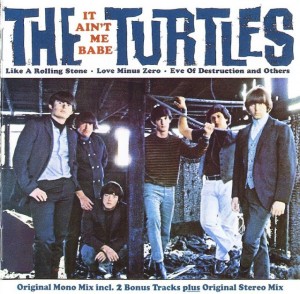
Soon-to-be-released Dylan tunes include “It Ain’t Me Babe,” “Like A Rolling Stone,” “Love Minus Zero” and “I Don’t Believe In You” by the Turtles in their first White Whale LP; “Chimes Of Freedom,” “Like A Rolling Stone,” “It Ain’t Me Babe” and “Mr. Tambourine Man” in a Dino, Desi and Billy Reprise LP; “Don’t Think Twice, It’s All Right” by Randy Boone in his Decca LP; “It Ain’t Me Babe,” “All I Really Want To Do,” “Like A Rolling Stone” and “You Were On My Mind” in a new Surfaris Decca LP; “Mr. Tambourine Man” and “All I Really Want To Do” in a new David Rose MGM LP; “All I Really Want To Do,” “Blowin’ In The Wind,” and “Don’t Think Twice, It’s All Right” in a forthcoming Cher Imperial LP; “Mr. Tambourine Man,” “Don’t Think Twice, It’s All Right,” “Love Minus Zero,” “All I Really Want To Do,” “Blowin’ In The Wind,” “She Belongs To Me” and “It Ain’t Me Babe” will be in Duane Eddy’s new Colpix LP.
Leroy Van Dyke’s first single for Warner Bros., is Dylan’s “It’s All Over Now Baby Blue.” Also, World Pacific is readying a new band (name undisclosed) which will debut an LP featuring 10 Dylan tunes, to be released near the end of the year.
Mass claims that teenagers are listening to the lyrics. Despite the heavy commercial rock n’ roll beat and the blasting overly amplified guitars, most in the music business tend to realize that the lyrical content of a song is getting through to young people, more in popularity in the current folk-music scene. The rock background, that in itself, has helped the singles get on Top 40 music stations. There are some skeptics who feel the kids are not quite listening to the words, but are rather phased by the new beat instead.
Dylan’s Columbia albums are loaded with message, protests, and satire songs, very cerebral and complex., which has not yet been “discovered” by the “long-haired” folk-rock performers as a preference of choice with today’s popular music.
Beach Boys on Chart
The Beach Boys are the only group represented on the charts with a summertime, teen-outdoorsy song with “California Girls.” All the West Coast beach-surf sound groups seemingly have been washed out to sea by the Dylan-influenced groups who have also begun imitating Dylan’s droning, monotonous vocal style.
Asked by Billboard to comment on the current rage to record message songs — some meaningful, some otherwise — folk singer Harry Belafonte said that folk music has always stressed social interests in protesting. Characteristics of the folk and rock idioms may be found in some established musicians as Odetta and Brownie McGee, Belafonte said. Folk and rock have their roots in Negro music,” Belafonte noted.
Today’s commercial folk singers may be compared to troubadours of yesterday, he said. The intensity of Negro music is part and parcel of the new sound reflecting the the world’s changing society, the entertainer continued.

Dylan’s overwhelming emergence as the chief procrastinator of the protest writers has all but obliterated other young folk-oriented writers who were created in this vein. This group includes Phil Ochs, Mark Spoelstra, Len Chandler, Richard and Mimi Larina and Pamela Poland. Paul F. Sloan has already gained notoriety for penning, “Eve Of Destruction,” a powerful single which has begun it’s climb up the charts.
The current trend has all but eliminated Caucasian groups from singing “let’s go to the hop-type songs.” The newest teen topic is protesting against a person’s abnormally long hair, and of social discords evidently present in our times. On the other hand, rhythm and blues’ artists and groups have not yet discovered Dylan and are yet still singing in their soulfully shouting style, with enough drums and rhythmic beat to satisfy their listeners with the current music trends. END
___
(Information and news source: Billboard; September 4, 1965)

![]()
 From the MCRFB NEWS archive: 1963
From the MCRFB NEWS archive: 1963
R&B Music Defined By Berry Gordy In His Own Words
DETROIT — There has been a lot of dispute lately over the definition of rhythm and blues as against rock and roll, pop and blues. To get some opinions on the subject, Billboard talked with several top people in the field and Berry Gordy, head of Tamla-Motown and Gordy Records, this is what he had to say about the matter:
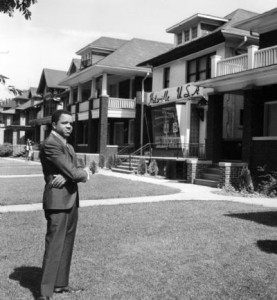
“It originated from Negro folk music. It’s characterized by a heavy-bottom sound — heavy drums and bass — and its strongly dominated by blues. It differs from rock and roll. The latter is lighter and not as heavy on the bass, it’s more pop with a heavy back beat. Rock and roll is derived from R&B, but its a cleaner sound — not as flunky and muddy on the low end — more of a light, up-tempo sound. Rhythm and blues — more than any other type of music — is from the soul and expresses the sincere feelings of the artist. No special musical schooling or training is necessary.
One thing — there’s quite an overlap between rhythm and blues, rock and roll and pop. Take our tune, ‘Do You Love Me,’ by the Contours on Gordy as an example. It was recorded rhythm and blues but by the time it reached the half-million mark, it was considered pop. And if we hadn’t recorded it with a Negro artist, it would have been considered rock and roll.”
Now — talk about being home for the holidays, virtually the entire Tamla-Motown-Gordy artist roster got a Christmas present by returning home to Detroit, ending a two-month concert tour that started in Washington and ended last week at New York’s Apollo Theater. They had a helter-skelter pace of one-nighters in between. Included on the tour were: the Miracles, Mary Wells, “Little” Stevie Wonder (he’s the 12 year-old Motown sensation who plays piano, drums, organs, banjo, harmonica and sings too), the Vandellas, Marvin Gaye and the Contours. The same line-up were signed for a New Year’s Eve show, Monday, December 31 at the Michigan State Fairgrounds in Detroit. END
___
(Information and news source: Billboard; January 5, 1963)
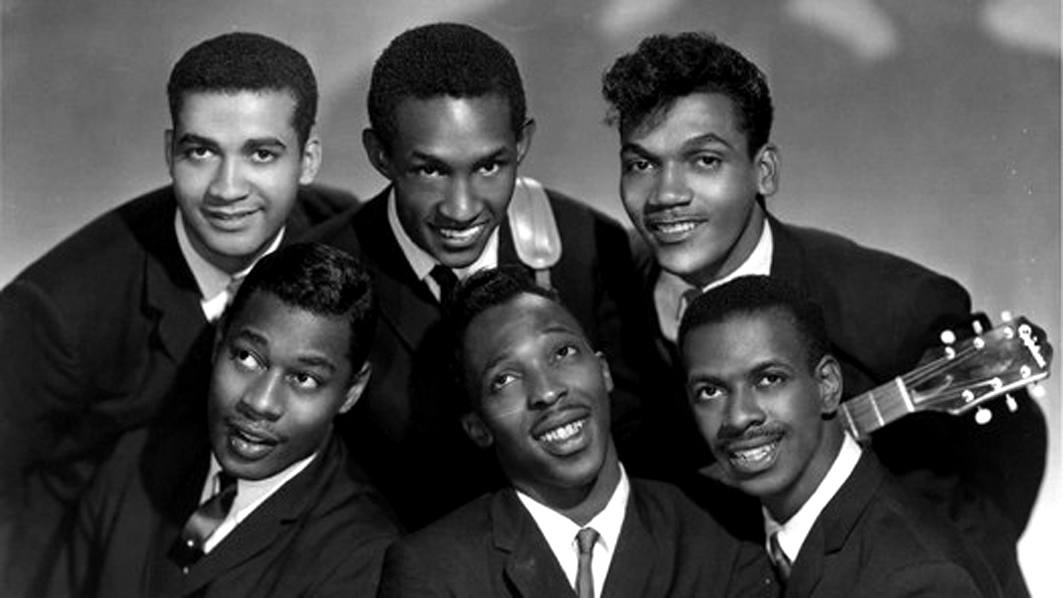

![]()
 From the MCRFB NEWS archive: 1965
From the MCRFB NEWS archive: 1965
Are We On The Cusp Of ‘Destruction’?
HOLLYWOOD — A record predicting the frenetic plight of society today, written with biting incisiveness by a 19-year old renegade from surfing music, is gaining acceptance over Top 40 music stations despite its “controversial” lyrics.
The writer is P. F. Sloan and his composition is “Eve Of Destruction,” sung by Barry McGuire on Dunhill Records.
Close to 200,000 copies were sold as of last week. The disk was released on July 26.
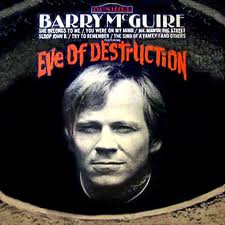
What is so remarkable about the single is it’s acceptance by radio stations. During the past two years three other singles of a controversial or social nature were refused by radio stations. These disks, labeled unacceptable or controversial by American broadcasters were “In The Summer Of His Years,” a tribute by Millicent Martin to the late-President Kennedy on ABC-Paramount, which was covered by Kate Smith on RCA, Connie Francis on MGM, Mahalia Jackson on Columbia and Tony Arden on Decca; “Now,” a plea for first-class citizenship for Negroes sung by Lena Horne and released on 20th Century Fox and “Ballad Of Ira Hayes,” depicting injustices to American Indians, sung by Johnny Cash on Columbia.
Dunhill Productions executive Lou Adler, in attempting to explain why “Destruction” has jumped on format station playlists, claims the song is not a protest at all. The writer is simply relating conditions in the world today, he says. “Sloan is not a hippie or pacifist,” Adler says. “He’s just a youngster who speaks in a contemporary language.”
Adler feels many of radio’s young disk jockeys have beliefs which coincide with those of Sloan’s. Adler points to a broadening of attitudes by broadcasters which allows them to now accept a song whose lyrics (published by Trousdale Music) makes mention of “senators (who) don’t pass legislation . . . . marches alone can’t bring legislation . . . . when human respect is disintegratin’ . . . . think of all the hate there is in Red China . . . . then take a look around down Selma, Alabama.“
A rekindling of interest in folk music, including the current folk-rock trend (see Billboard; June 12) has created an aura in which disk jockeys are aware of changing times, Adler says.
One additionally vital reason for the acceptance of the single, according to Adler, is the rock-like background behind Barry McGuire, a former lead with the New Christy Minstrels.

This contemporary guitar-harmonica sound allows disk jockeys to quickly identify the disk as a commercial product. In the case of the other three “message” records, the arrangements (were regarded) uncommercial. There were scattered stations which played them, but nothing like the exposure “Destruction” has received here from KRLA, KFWB, KHJ and KBLA.
Despite the probing of domestic tinderbox situations like the struggle for human rights, the single is being played in all parts of the country, the label says. Among the first markets providing exposure were Boston, Cleveland, Los Angeles, San Francisco, Baltimore and Washington. It was reported in some areas disk jockeys and program directors went to station managers and owners in obtaining clearance to play the record.
When Lena Horne’s “Now” protest single was released, several program directors told Billboard in Los Angeles they were in the entertainment business and were not concerned with airing records with political overtones. When the Millicent Martin tribute to the slain president was recorded from its original “This Was The Week That Was” British TV show, broadcasters claimed the single was in poor taste. Some said they did not think it was proper for anyone to make money from the tragedy.
John Barrett, general-manager of rating leader KRLA, told Billboard that the arts have always been associated with political thought and that for radio to negate this was foolish. KRLA was playing “Destruction” because it suddenly appeared on its local survey, Barrett says. If public demand warrants play, the station complies, unless decency rules out exposure, Barrett explained. “It is not our prerogative to censor.” Barrett said the station played a Kennedy tribute single but did not air the “Now” disk since it never showed up on its survey of 30 locations a week.
Barrett added there has been “surprisingly little comment” from listeners about “Eve Of Destruction,” McGuire’s debut for Dunhill. There were more comment from station personnel who were split idealistically over the controversial overtones heard throughout the song. END
___
(Information and news source: Billboard; August 14, 1965)
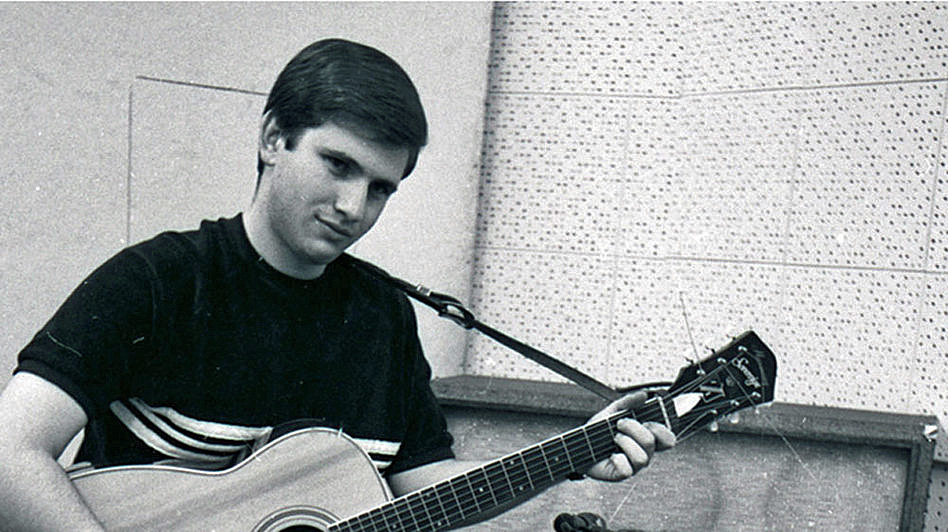

![]()
 From the MCRFB NEWS archive: 1965
From the MCRFB NEWS archive: 1965
‘Eve Of Destruction’ Has Its Day
___
CHICAGO — Barry McGuire’s “Eve Of Destruction” may be too controversial for the city’s middle-of-the-road radio station, but it represents a new trend in music, according to WCFL and WLS, the city’s two rockers.

The record also has all the earmarks of being a hit in terms of retail sales. Bob Garmisa, of Garmisa Distributing Co., says he moved 17,000 copies of the record in the Chicago area in the past three weeks.
Fred Sipiora, of Sipiora One-Stop, said he’s sold 1,500 records of the song and has another 1,500 on order. “Dealers are starting to ask for the records,” Sipiora says.
WCFL BROKE DISK
WCFL broke the record in late July and was followed by WLS a week later. Some of the more conservative radio stations, however, are keeping hands off. Jack Williams, recently named program director at WIND, Group W’s powerful middle-of-the-roader, termed the “Eve Of Destruction” lyrics “sick.” “It’s not the sort of record we want to play for our audience,” Williams said. WIND evaluates its playlist weekly, and Williams said “Destruction” was voted down twice.
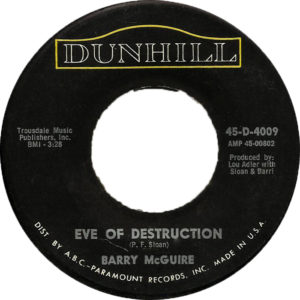
At NBC’s WMAQ, Glenn Bell, program director, said, “We’re not playing it because it’s too hard for our middle-of-the-road audience sound.” Bell, however, said he felt the record will have the greatest impact on the world of pop music of any record issued in the past several years.
“If I were a Top 40 station, I would play it,” Bell said. “In fact, I would make it a pick.”
EARMARKS OF A HIT
At kingpin WLS, Clark Weber, the station’s new program director, said “Destruction” had all the earmarks of a hit. WLS’ sister stations WXYZ, Detroit; WABC, New York; KQV, Pittsburgh, all put it on the air the same time.
Weber described “Destruction” as a “message record blending folk and R&B.” “It bites,” he said.
The WLS music man feels that the British hold on pop music may be on the wane and that “Destruction” may represent a type of music which will “move up to fill the void.”
WCFL’s program chief Ken Draper predicted flatly that “Eve Of Destruction” would be “a very big record.” “Pop music doesn’t create taste, it reflects it,” Draper said. He felt that “protest music” was already a trend. “It’s a little frightening, it makes us look at ourselves, but it’s here.” Draper remarked.
The WCFL programming chief said the McGuire record was nothing more than a logical follow-up to other “protest” disks done by such artists as Sonny Bono, Bob Dylan, Sonny and Cher and Jody Miller.
“Tragedy is nothing new to music,” noted Draper. “Operas are filled with it, and people consider it art. When people hear it in a pop song lyric, it shakes them up a little bit.” END
___
(Information and news source: Billboard; August 21, 1965)

![]()
 From the MCRFB NEWS archive: 1970
From the MCRFB NEWS archive: 1970
WWWW To Add Oldies With Current Hits
Detroit — Though WWWW-FM is building an image here of being the solid gold station, general manager Don Barrett said that the heavy slate of programming will be current releases from the charts. Working slowing with national program manager Ken Dowe, who’s responsible for the programming of all the McLendon Broadcasting stations, Barrett set up a format which hinges on two oldies to one current record.
 All the oldies are slated for the personalities, though the deejays use their judgments in playing current hits. The current records are usually in the upper half of Billboard Hot 100 Chart or in the top 15 sellers in the city, although WWWW-FM will also play new releases such as Dionne Warwick’s “Your Own Backyard.”
All the oldies are slated for the personalities, though the deejays use their judgments in playing current hits. The current records are usually in the upper half of Billboard Hot 100 Chart or in the top 15 sellers in the city, although WWWW-FM will also play new releases such as Dionne Warwick’s “Your Own Backyard.”
The oldies will go back to 1951, and the station has a library that will permit it to go nine-days without repeating an oldie. This is why Barrett slates all of the oldies — so that when an oldie comes up, it comes up at a different time of the day. “Gee” by the Crow is just as good at 3 a.m. as it is at 3 pm., Barrett said. And, to create a consistent sound around the clock, the station doesn’t alter its sound during the “housewives” hours or the afternoon hours when teens and young adults are more prone to listen to radio.
The reason for the format change (WWWW-FM was a background music station until March 10) was that a study of ARB and Pulse figures showed the station was “fighting with too many stations for too small a piece of the audience pie,” Barrett said. Barrett, whose career includes serving as national program director of all McLendon stations, was most recently in sales in XTRA, a Tijuana station in which McLendon is involved in.
Deejays at the station include program director Ron Rose, Chuck Richards, Tom Michaels, Robin Seymour on weekends, and Tom Clay. Clay, who does the 5 – midnight stint on the station, comes in at 9 a.m. to start prepping his show, Barrett said — “the sign of a real pro.” In McLendon fashion, WWWW-FM is building a campaign around Clay that will include a two-week saturation spot schedule on local television.
The station recently gave away a gold-painted 1957 Chevrolet to help build its image and is now preparing to give away “Good Guys” sweatshirts because no other radio station has done it in Detroit for several years.
Oldies are separated in three different lists — A, going back before 1960; B, 1960 through 1964; C, 1965 through the present. Any time a pre-1960 record is played, the next record is from the “C” list, said Barrett, so that the sound don’t stay too long in the distant past. END
___
(Information and news source: Billboard; July 25, 1970)
A MCRFB Note: You can watch a video with Don Schuster on WWWW-FM, December 25, 1970, in a previous MCRFB (February 20, 2012) feature by going HERE.

![]()